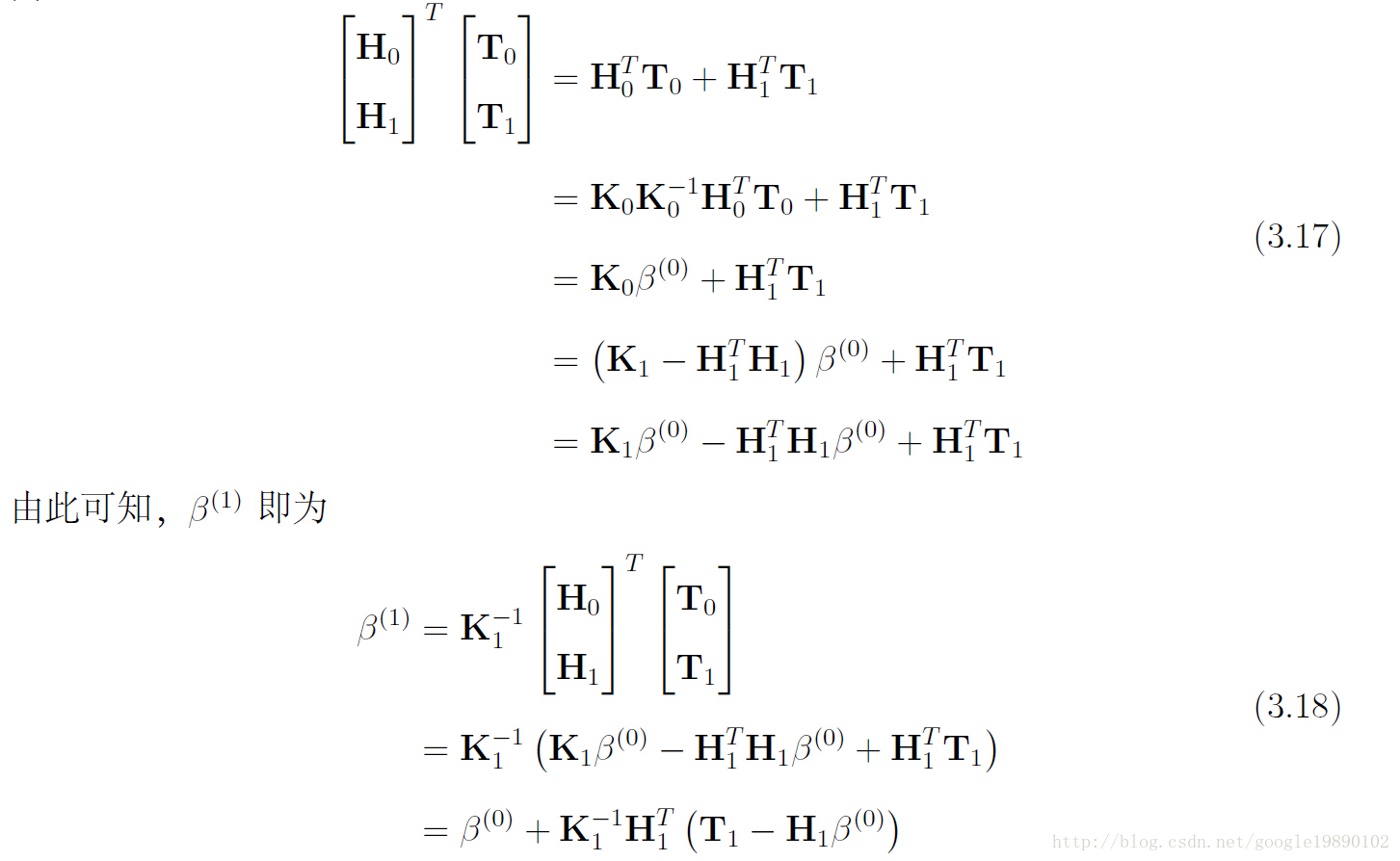这篇文章主要是前面整理的,就直接上图了。
实验:
# coding:UTF-8
#################
# OS_ELM
# author : zhiyong_will
# date : 2015.3.22
#################
from __future__ import division
from datetime import datetime
from csv import DictReader
from math import exp
import random
from numpy import *
import string#####设置相关参数########
trainData = "C:\\Users\\dell\\Desktop\\OS-ELM\\segment_train.csv"
testData = "C:\Users\dell\Desktop\OS-ELM\\segment_test.csv"
#隐含神经元的个数
nHiddenNeurons = 180
#输入层的神经元个数
nInputNeurons = 19
#初始训练集的大小
NO = 280#函数
def sig(tData, Iw, bias, num):'''tData:样本矩阵:样本数*特征数Iw:输入层到第一个隐含层的权重:隐含层神经元数*特整数bias:偏置1*隐含神经元个数'''v = tData * Iw.T #样本数*隐含神经元个数bias_1 = ones((num, 1)) * biasv = v + bias_1H = 1./(1+exp(-v))return H##导入数据集
firstTrainData = []
firstTrainLable = []# 处理训练样本
for t, row in enumerate(DictReader(open(trainData))):Id = row['Id']del row['Id']del row['I0']data = []if int(Id) < NO:# 处理是否被点击if row['Label'] == '1.00000000':y = 1elif row['Label'] == '2.00000000':y = 2elif row['Label'] == '3.00000000':y = 3elif row['Label'] == '4.00000000':y = 4elif row['Label'] == '5.00000000':y = 5elif row['Label'] == '6.00000000':y = 6else:y = 7 del row['Label']firstTrainLable.append(y)# 处理特征for key in row:value = string.atof(row[key])#index = int(value + key[1:], 16) % Ddata.append(value)firstTrainData.append(data)continueelif int(Id) == NO:#开始训练p0 = mat(firstTrainData)T0 = zeros((NO, 7))#处理样本标签for i in xrange(0, NO): a = firstTrainLable[i]T0[i][a-1] = 1T0 = T0 * 2 - 1Iw = mat(random.rand(nHiddenNeurons, nInputNeurons) * 2 - 1)#随机生成区间-1,1之间的随机矩阵bias = mat(random.rand(1, nHiddenNeurons))H0 = sig(p0, Iw, bias, NO)#样本数*隐含神经元个数M = (H0.T * H0).Ibeta = M * H0.T * T0else:#训练剩余的样本,每次训练一条样本# 处理labelif row['Label'] == '1.00000000':y = 1elif row['Label'] == '2.00000000':y = 2elif row['Label'] == '3.00000000':y = 3elif row['Label'] == '4.00000000':y = 4elif row['Label'] == '5.00000000':y = 5elif row['Label'] == '6.00000000':y = 6else:y = 7 del row['Label']Tn = zeros((1, 7))#处理样本标签b = yTn[0][b-1] = 1Tn = Tn * 2 - 1# 处理特征data = []for key in row:value = string.atof(row[key])data.append(value)pn = mat(data)H = sig(pn, Iw, bias, 1)M = M - M * H.T * (eye(1,1) + H * M * H.T).I * H * Mbeta = beta + M * H.T * (Tn - H * beta)# 计算训练误差
correct = 0
sum = 0
for t, row in enumerate(DictReader(open(trainData))):del row['Id']del row['I0']# 处理是否被点击if row['Label'] == '1.00000000':y = 1elif row['Label'] == '2.00000000':y = 2elif row['Label'] == '3.00000000':y = 3elif row['Label'] == '4.00000000':y = 4elif row['Label'] == '5.00000000':y = 5elif row['Label'] == '6.00000000':y = 6else:y = 7 del row['Label']# 处理特征data = []for key in row:value = string.atof(row[key])data.append(value)p = mat(data)HTrain = sig(p, Iw, bias, 1)Y = HTrain * beta# 判断if argmax(Y) + 1 == y:correct += 1sum += 1
print("训练准确性为:%f" % (correct/sum))# 计算测试误差
correctTest = 0
sumTest = 0
for t, row in enumerate(DictReader(open(testData))):del row['Id']del row['I0']# 处理是否被点击if row['Label'] == '1.00000000':y = 1elif row['Label'] == '2.00000000':y = 2elif row['Label'] == '3.00000000':y = 3elif row['Label'] == '4.00000000':y = 4elif row['Label'] == '5.00000000':y = 5elif row['Label'] == '6.00000000':y = 6else:y = 7 del row['Label']# 处理特征data = []for key in row:value = string.atof(row[key])data.append(value)p = mat(data)HTrain = sig(p, Iw, bias, 1)Y = HTrain * beta# 判断if argmax(Y) + 1 == y:correctTest += 1sumTest += 1
print("测试准确性为:%f" % (correctTest/sumTest))实验结果:
参考文章:
A Fast and Accurate Online Sequential Learning Algorithm for Feedforward Networks












